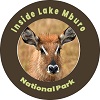Bisheshe Gate is one of the entry points into Lake Mburo National Park, although it is rarely used for a number of reasons. First, a significant part of the drive through this gate involves passing through an area that was severely impacted by human activities and hence is in a recovery process. Bisheshe Gate is in the rarely explored western part of this protected area but is perfect and frequently used by visitors coming from Mbarara town.

While it is one of the rarely explored areas of the park, there is a wonderful birding spot close to Bisheshe Gate, hence allowing gates to sight lots of species. These include the Greater painted snipe, Abyssinian ground hornbills, the Bare-faced go-away bird, the Blue-napped Mousebird, to mention but a few.
The western shores of Lake Mburo and the eastern banks of River Rwizi are very visible for travelers who use Bisheshe Gate, which is about 33 kilometers from its wooded watercourse. This long stretch is part of the Rwizi Track, which is rewarding for birders. This makes it possible for travelers to drive beyond the gate to the main Mbarara road, although still quite challenging to explore even for 4WD vehicles.
Accessing the Park through Bisheshe Gate is therefore perfect for those planning to explore the Rwizi track through an area of light acacia savannah. Here, you will find significant herds of Burchell’s zebras, impalas, and giant elands among others.
Besides Bisheshe Gate, other entry points into Lake Mburo National Park are Sanga Gate, and Nshara Gate which are even commonly used.
About Lake Mburo National Park and Bisheshe gate
Lake Mburo National Park is the smallest savannah national park in Uganda covering an area of 370 square kilometers, sitting on the western side of the country. This protected area is a compact gem with at least 20% of its landscape marked by wetland habitats, although there are other ecosystems in the form of savannah plains, woodlands, lakes, forests, and rock ridges.
A variety of rare wildlife species, including 70 mammal species, call the park home. These include Cape buffaloes, topis, duikers, hippos, bushbucks, duikers, impalas, spotted hyenas, vervet monkeys, olive baboons, Rothschild giraffes, Burchell’s zebras, reedbucks, and Klipspringers among others.
A total of 350 bird species call Lake Mburo National Park home, and this makes it one of the 33 important bird areas in this wilderness area. Some of the exceptional bird species to expect during your adventure are Ross Turacos, Pink-backed pelicans, African fish eagles, Shoebill storks, Herons, Verreaux’s eagle-owls, Narina Trogon, Bare-faced go-away birds, to mention but a few.
This Park is known for offering unmatched game-viewing experiences, guided forest and bush walks, boat cruises, horseback rides, and cycling with wildlife.
Best time to visit Lake Mburo National Park
Lake Mburo National Park is open throughout the year to travelers but unforgettable wildlife viewing experiences are achieved during the dry seasons. This is when vegetation is shorter thus providing clearer visibility of animals or when watering points are reduced. Wildlife, therefore, converge around the few watering points because the park gets hotter than usual during those months. Expect the best viewing opportunities during these months.
For other best birding spots in Uganda, don’t miss out Bwindi Impenetrable National Park, Queen Elizabeth National Park, Kidepo Valley National Park and Semuliki National Park – the birders’ paradise. In Rwanda, you can consider visiting Nyungwe Forest National Park and Akagera National Park.
